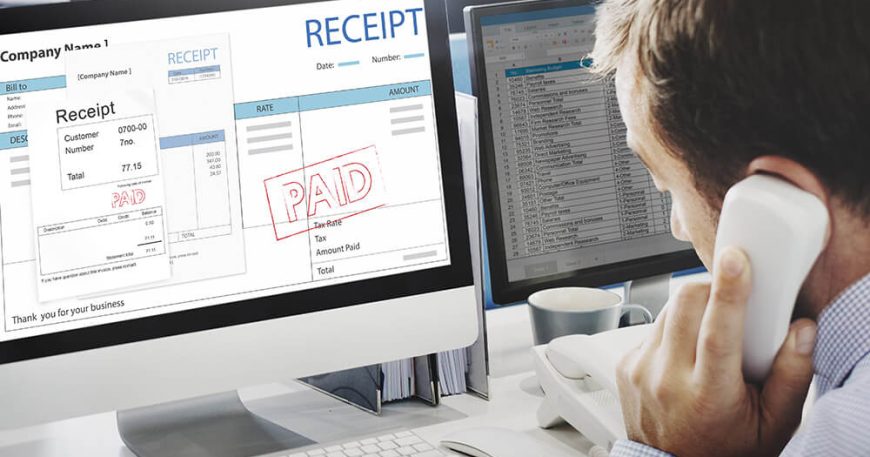A/R Management is a vital component of maintaining the financial stability of any business, especially in industries like healthcare and medical billing. Accounts receivable management ensures that companies receive payments for goods and services rendered on credit in a timely manner, thus optimizing cash flow, reducing payment delays, and avoiding bad debts.
In this article, we’ll explore the essential components of accounts receivable management, why it is critical, and the best practices that can significantly improve a company’s financial health.
Table of Contents
- What is Accounts Receivable (AR)?
- Why is Accounts Receivable Management Important?
- Accounts Receivable Process Explained
- Common Challenges in Accounts Receivable Management
- Best Practices to Improve Accounts Receivable Management
- The Role of Technology and Automation in AR Management
- Key Metrics and KPIs for Monitoring AR Performance
- How to Reduce Days in AR
- Conclusion
What is A/R Account Receivable?
Accounts Receivable (AR) refers to the amount of money that customers owe to a business for the services or goods they have received but not yet paid for. For businesses operating on credit, managing accounts receivable is crucial to ensuring they have the funds needed to meet daily operational expenses, invest in growth, and keep the business running smoothly.
In industries such as healthcare, where services are rendered before payments are received, AR represents a significant portion of the company’s cash flow. Medical billing, for example, involves receiving payments from both patients and insurance companies, making it a complex and challenging process. Without effective management, accounts receivable can lead to cash flow gaps, delayed payments, and even financial instability.
Why is Accounts Receivable Management Important?
Accounts receivable management directly affects a company’s financial health, cash flow, and ability to meet short-term obligations. A poorly managed AR system can lead to delayed payments, cash flow problems, and increased bad debt write-offs.
Key reasons why AR management is important include:
- Optimized Cash Flow: By managing receivables efficiently, businesses can ensure a steady cash flow, enabling them to cover operational costs, pay vendors, and reinvest in growth.
- Reduced Days in AR: The goal of AR management is to reduce the time it takes to collect payments, commonly known as Days in AR. A lower Days in AR indicates quicker payment cycles, which are crucial for financial health.
- Minimized Bad Debts: Effective AR management reduces the likelihood of uncollected invoices, thus minimizing the chances of bad debts.
- Enhanced Customer Relationships: Timely invoicing and follow-up processes demonstrate professionalism, build trust, and strengthen relationships with customers and payers.
A/R Management Process Explained
The accounts receivable management process involves several key steps, from invoicing to payment collection. While this process can vary across industries, the fundamental stages are largely the same.
- Order Placement: This is the initial step where a customer places an order for goods or services. In healthcare, this would involve a patient receiving medical services, with the promise of later payment.
- Credit Evaluation: Before offering services or goods on credit, businesses assess the creditworthiness of their customers. A proper credit evaluation ensures that businesses don’t extend credit to those who may have difficulty paying.
- Invoice Generation: After the credit evaluation and service delivery, the company generates an invoice that includes details such as the amount due, payment terms, and due date. In medical billing, this invoice is often sent to the patient’s insurance company for processing.
- Payment Collection: Once the invoice is sent, the business tracks the payment and sends reminders if necessary. In medical billing, it is common for this step to involve working with insurance companies and patients to resolve discrepancies or delays.
- Dispute Resolution: Occasionally, customers may dispute an invoice due to incorrect charges or other issues. Businesses must resolve these disputes quickly to avoid payment delays.
- Payment Processing: When the payment is finally received, it must be accurately applied to the correct invoice, and the business’s financial records must be updated.
- Monitoring AR: Continuous monitoring of accounts receivable is crucial. Businesses track key metrics like Days Sales Outstanding (DSO) and aging reports to ensure timely collections and to identify any problem areas in the process.
Common Challenges in Accounts Receivable Management
Managing A/R can be challenging due to several factors. Businesses face common hurdles that can slow down collections, affect cash flow, and lead to uncollected payments. Some of the most common challenges include:
- Invoice Errors: Incorrect or delayed invoices can lead to disputes and payment delays.
- Late Payments: Customers may not always pay their invoices on time, leading to increased Days in AR and cash flow disruptions.
- Dispute Resolution Delays: When disputes arise, resolving them quickly is critical to ensure timely payments.
- Data Entry Errors: Human errors in data entry or coding, especially in medical billing, can lead to rejected claims and delayed payments.
- High Out-of-Pocket Costs: In the healthcare industry, rising out-of-pocket costs for patients can result in slower collections and an increase in unpaid bills.
Best Practices to Improve Accounts Receivable Management
Implementing best practices in AR management can streamline operations and improve cash flow. These strategies help businesses overcome the common challenges they face in the AR process.
- Verify Patient/Customer Information Early
For healthcare providers, verifying patient insurance information before the service can reduce claim denials and speed up the payment process. In other industries, it’s crucial to verify customer details such as creditworthiness and contact information upfront. - Use Clear and Accurate Invoicing
Clear, accurate invoices are essential for timely payments. Include all necessary details, such as the service or product provided, payment terms, due date, and any additional fees for late payments. - Automate Reminders and Follow-Ups
Using automated systems to send reminders to customers can significantly reduce late payments. Automation tools can send reminders before the due date, follow-up emails after the due date, and alerts for overdue payments. - Offer Multiple Payment Methods
To make it easier for customers to pay, offer various payment options such as credit cards, bank transfers, and online payment portals. This not only improves customer experience but also encourages prompt payments. - Train Staff on AR Best Practices
Proper training is essential for those handling AR processes. Staff should be trained to handle disputes, negotiate payment terms, and follow up with customers in a professional manner.
The Role of Technology and Automation in AR Management
Technology and automation are transforming accounts receivable management, making it easier to track payments, send reminders, and process payments. Automated systems are capable of managing everyday tasks such as:
Generating invoices: Automation ensures that invoices are sent out on time with accurate details.
Tracking payments: Automated systems can monitor the payment status of invoices and send alerts for overdue payments.
Payment Matching: Software can automatically match received payments with corresponding invoices, reducing errors and speeding up the process.
Analytics and Reporting: Automation tools provide real-time data on AR metrics, allowing businesses to make informed decisions.
Key Metrics and KPIs for Monitoring AR Performance
Monitoring performance in accounts receivable management requires tracking key metrics and KPIs. These metrics provide insights into the efficiency of the AR process and help identify areas for improvement.
- Days Sales Outstanding (DSO)
DSO indicates the average duration required to receive payments following a sale. A lower DSO indicates faster payment collection, which is essential for maintaining cash flow. - Average Days Delinquent (ADD)
ADD tracks how long invoices remain unpaid after their due date. A higher ADD indicates that customers are consistently paying late, signaling a need for improved follow-up processes. - Accounts Receivable Turnover Ratio
This ratio measures how quickly receivables are collected. A higher turnover ratio suggests that the business is efficiently converting receivables into cash. - Collection Effectiveness Index (CEI)
CEI measures how effective a company is at collecting receivables over a specified period. A high CEI indicates strong collections performance.
How to Reduce Days in AR
Reducing Days in AR is a top priority for many businesses. Shorter AR cycles mean faster access to cash, which improves liquidity and reduces the need for borrowing. To reduce Days in AR, consider the following strategies:
Improve Invoicing Processes: Send invoices promptly and ensure they are accurate to avoid delays caused by disputes.
Automate Payment Reminders: Automated reminders can prompt customers to pay on time, reducing the risk of late payments.
Offer Early Payment Discounts: Offering a small discount for early payments can encourage customers to pay their invoices faster.
Use Payment Portals: Providing an easy-to-use online payment portal allows customers to pay quickly, reducing the time it takes to receive payments.
Conclusion
Effective accounts receivable management is essential for maintaining a healthy cash flow, especially in industries like healthcare where delays and denials in payment are common. By implementing best practices, automating key processes, and monitoring KPIs, businesses can reduce Days in AR, improve collections, and ensure their financial stability.



